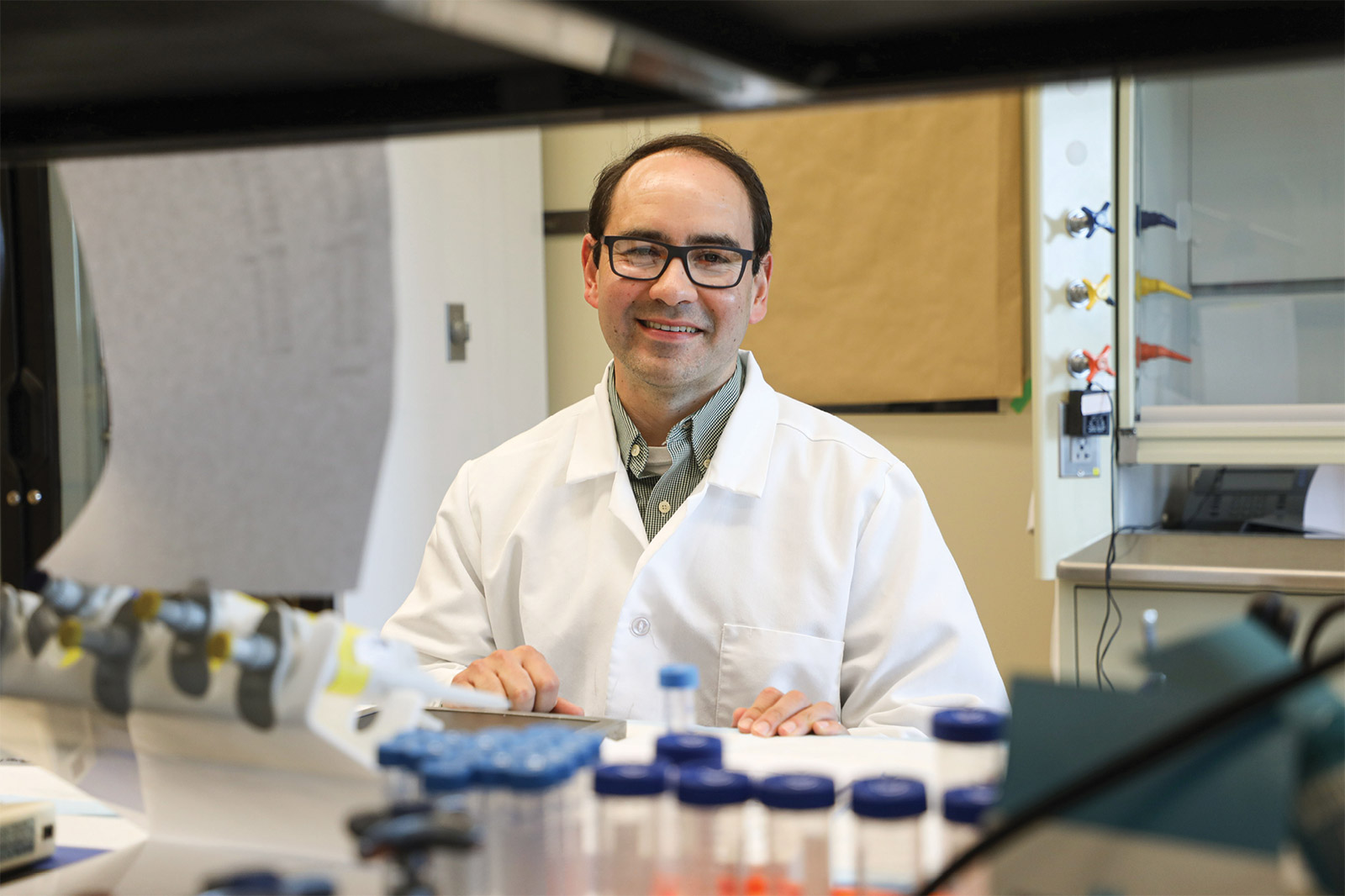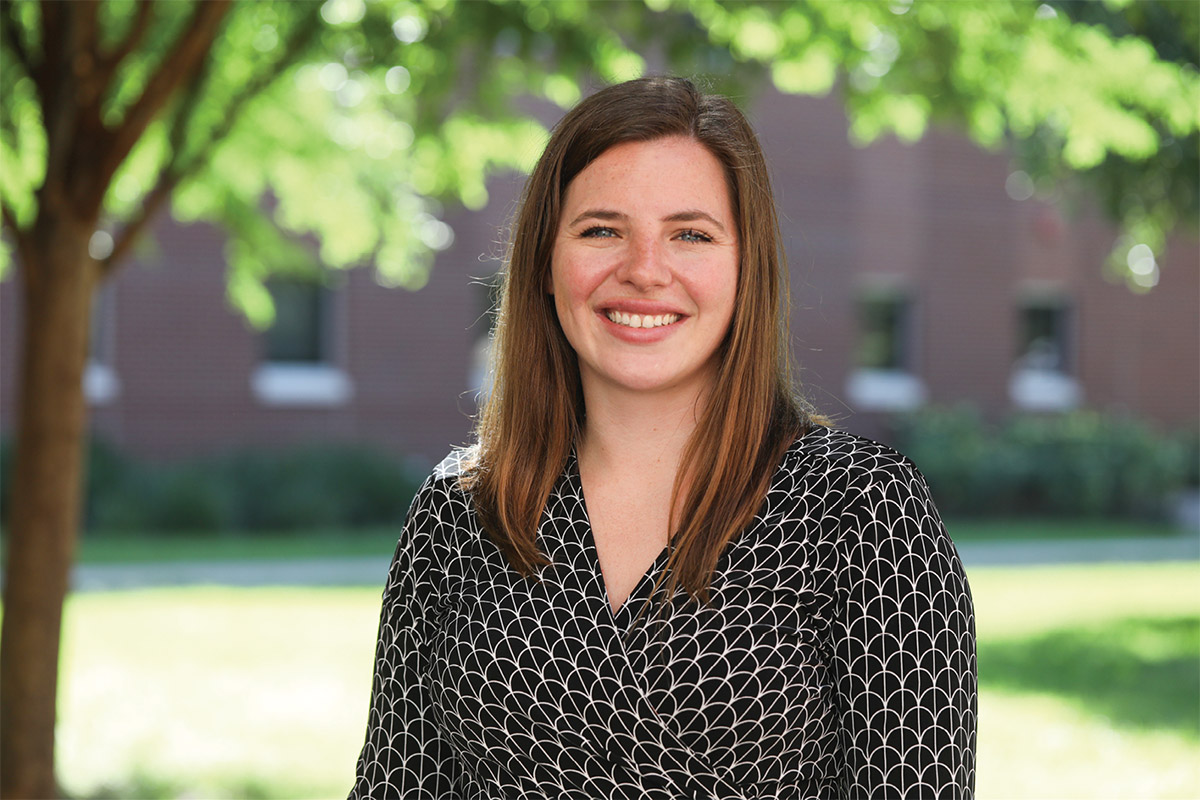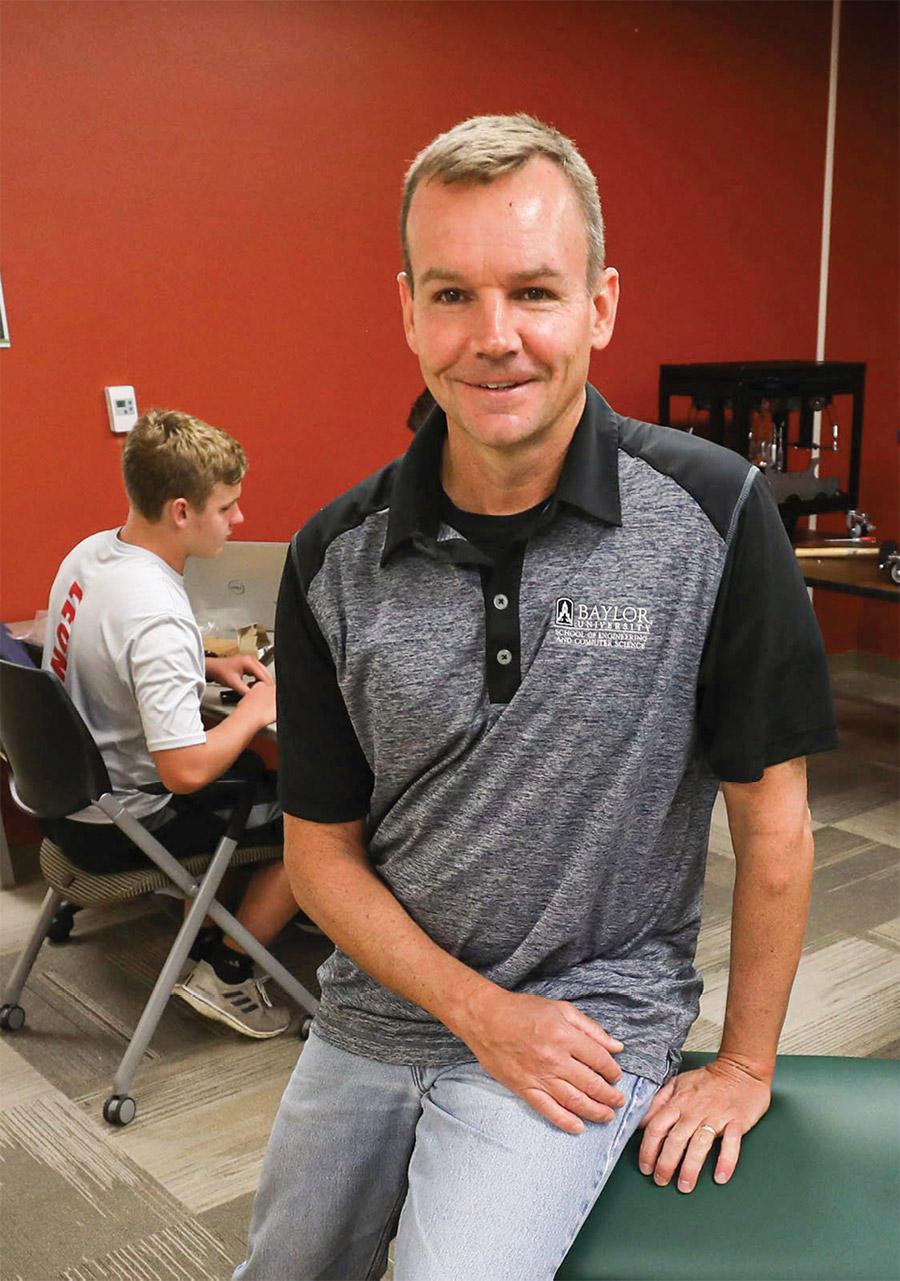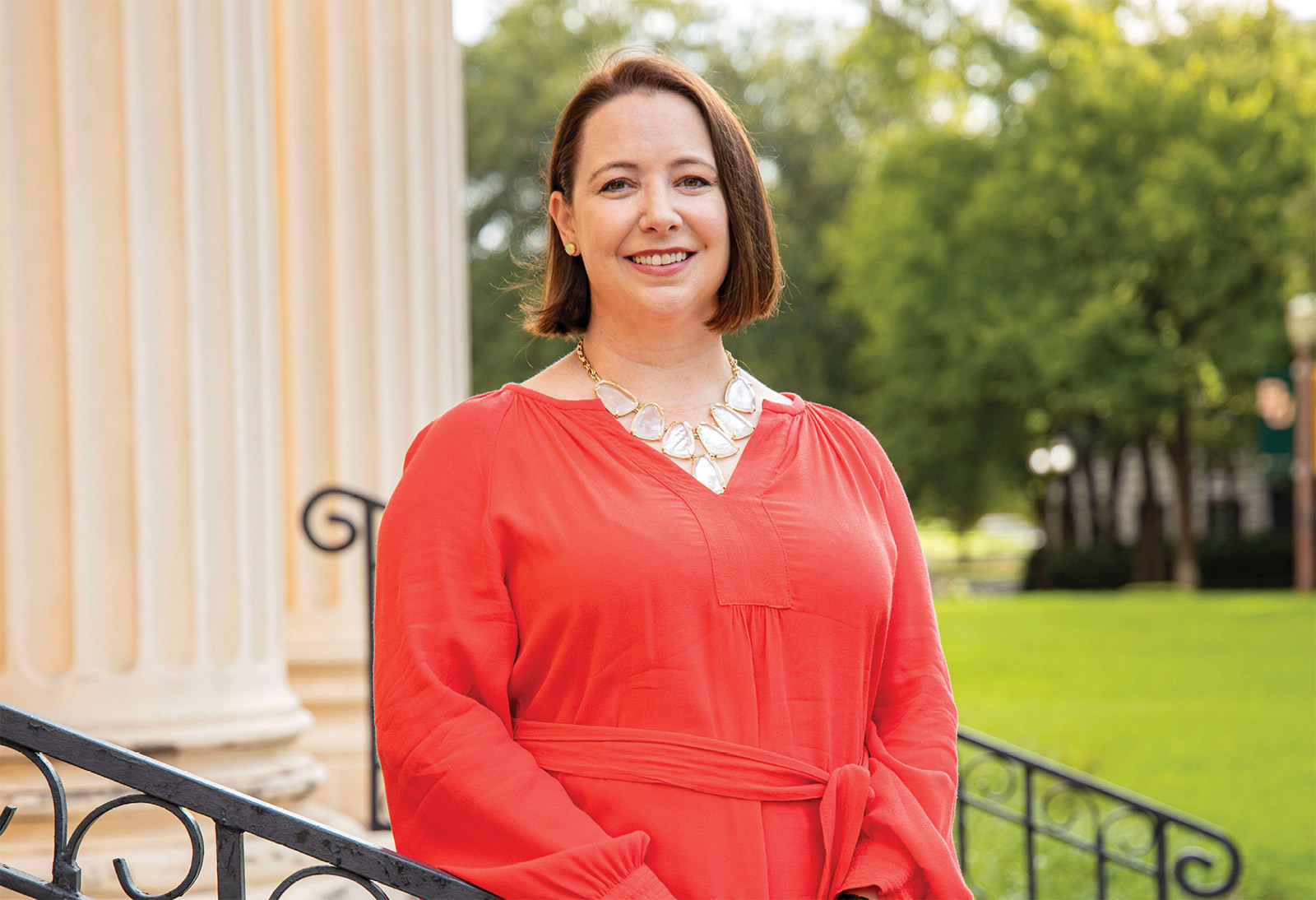Follow the Data
Baylor researchers are impacting autism treatment through behavioral therapies, empowerment of parents and teachers, cutting-edge lab research, engineering breakthroughs and more.
Autism spectrum disorder (ASD) resides at a crossroads of intense attention and sparse understanding. The Centers for Disease Control and Prevention (CDC) estimates that one in 54 U.S. children meets ASD criteria, a prevalence that has steadily grown in recent years. Millions of families grapple with the commensurate challenges of a disorder with roots that have evaded researchers and that currently has no medicinal treatment.
Dr. Joaquin Lugo, associate professor of psychology and neuroscience, is among many Baylor professors on the frontlines of autism research. He understands the families’ frustration, and he is dedicated to finding answers.
“Because there’s so much we don’t know, families often feel like they’re grasping at whatever they can to fill those gaps and support their child,” Lugo says. “We follow the data — whatever it drives.”
Lugo, BS ’99, works to build a deeper understanding of the disorder through rigorous exploration on a variety of condition-related factors to cut through the fog of uncertainty. He approaches autism research through the lens of a neuroscientist. Colleagues across campus apply their discipline-specific insights to different pieces of the autism puzzle.
In recent years, Baylor researchers have earned millions of dollars of competitive external funding that supports research in numerous departments. The University has added resources like the Baylor Center for Developmental Disabilities to combine holistic service and practice with Tier 1 research endeavors.
The work is often interdisciplinary in nature and addresses the disorder from a variety of angles. Lugo searches for causes and treatments, while School of Education faculty members Dr. Tonya Davis, BS ’02, MS ’04, and Dr. Stephanie Gerow provide parents and educators with behavioral tools to serve children with ASD.
Baylor research led to the creation of a device — developed by Dr. Brian Garner, associate professor of mechanical engineering — that simulates the therapeutic gait of a horse, which can be beneficial for children with autism. The approaches are varied, but they share a connective tissue — the desire to ensure that autism lays less of a claim on a child’s life.
Associate Professor, Psychology and Neuroscience,
Director of the PhD Program in Psychology
In It for the Long Haul
The CDC defines autism spectrum disorder as a “developmental disability that can cause significant social, communication and behavioral challenges. There is often nothing about how people with ASD look that sets them apart from other people, but people with ASD may communicate, interact, behave and learn in ways that are different from most other people. Some people with ASD need a lot of help in their daily lives; others need less.”
That definition, focusing on behavioral and developmental impacts instead of causes and physical qualities, underscores the long game that researchers like Lugo play in search for transformative discoveries.
“Autism doesn’t appear as something that is very obvious,” Lugo says. “You can’t look at an MRI and pinpoint an affected area in the brain. The effects can be subtle in many ways. But those subtle effects, multiplied across 100 million neurons, become a more profound kind of effect. You have to really zoom in or look at functional connectivity where you can see that the brain’s network fires differently. That changes the way people with the disorder respond to different situations because the information is not processed the same.”
From his lab in the Baylor Sciences Building, Lugo has researched connections between autism and epilepsy and other genetic conditions, as well as diet, vitamins and more. His highly regarded research has earned nearly $1 million in funding from the National Institutes of Health to support these investigations.
Following the data in an area where so little is known means searching for a connection with very clear effects and attacking it repeatedly from as many research angles as possible. Much of Lugo’s research is focused on neuroinflammation, an area where he recognizes a need for further scholarly attention.
“When molecules called cytokines are released, they trigger the body to produce an inflammatory response,” Lugo says. “The body views them as foreign invaders coming in. In the brain, microglial cells react and target whatever is releasing the cytokines. We’re looking at this because the response can be aberrant; microglia can overdo it.”
That hyperactive response reshapes neurons in the brain, potentially stripping them with fewer synapses to fire, or altered channels for neural communication.
“A lot of that is aligned with autism,” Lugo says. “We know there’s enough of a miscommunication or connectivity that is slightly different than it should be. It’s not super dramatic, but there’s subtle shaping and sculpting. If we can block some of those effects as possible therapies for early developmental epilepsy, we can stop some of this excessive pruning to help restore the behavior and neurochemical changes.”
Time and study — as with all aspects of ASD research — will tell the efficacy of analyzing neuroinflammation and its relationship to the disorder, but the disorder demands such an approach. Wherever the data takes him, Lugo and his students are in it for the long haul, navigating the inevitable roadblocks in search of a breakthrough.
Tools to Improve Trajectories
The Baylor Center for Developmental Disabilities (BCDD) is a partnership between Baylor University and Baylor Scott & White McLane’s Children’s Hospital, located within Waco’s Hillcrest MacArthur Clinic. BCDD provides low-cost services to families for a variety of developmental needs, trains student clinicians and invigorates top-tier research within the field.
Davis and Gerow are among seven Baylor faculty at BCDD. Both are experts in applied behavior analysis, a learning practice based on the science of behavior that guides practitioners to uncover the causes of problem behaviors and helps children develop skills. Much of their efforts are focused on improving social, emotional, behavioral and educational trajectories for students with autism.
Gerow is assistant professor of special education in Baylor’s educational psychology department. She is lead researcher and supervisor in the BCDD Clinic for Assessment, Research, and Education (CARE).
“What we find is that kids with developmental disabilities are more likely to engage in problem behavior,” Gerow says. “Those kids are at a higher risk for having lifelong delays and deficits without interventions that can ameliorate those problem behaviors.”
Most parents can identify with elements of what is known as problem behavior in children with autism: lashing out or misbehaving when they’re hungry, unable to play with a favorite toy, or simply wanting their parent’s attention. But for children with autism, typical parenting strategies are often insufficient to meet their developmental needs. They may resort to more aggressive behaviors such as hitting others or damaging items.
Gerow and Davis focus much of their research on providing parents, teachers and caregivers with evidence-based interventions to address those behaviors. Davis is professor of educational psychology and special education program director at Baylor. She is also the Baylor CARE Director, the ABA clinic housed in the BCDD.
“We do a lot of research in that area with a focus on skills kids need to build,” Davis says. “We know that early and intensive intervention has a huge effect on the trajectory of a child’s life. We work to train teachers, or equip parents, to use these practices in ways that help children and see the positive effects of these interventions that will persist when they are not in a clinic.”
Interventions are the clinical term for these evidence-backed methods for assessing and improving behavior. These strategies can help children with autism learn new skills such as completing daily routines and using communication rather than problem behavior. The challenge is that it takes time for parents and educators to learn these interventions and implement them with their children. Time is a particularly taxed commodity for those serving children with developmental disabilities.
Davis and Gerow have both advanced strategies to bridge that gap, receiving substantial grants to provide intervention training to hundreds of families, teachers and caregivers. They have combined for three highly competitive grants this year, delivering more than $1.3 million to fund their efforts.
Gerow earned Baylor’s first U.S. Department of Education Career Development Award, which offers more than $493,000 to help her provide caregivers and community agencies with intervention training. She also was awarded $370,000 through a Texas Higher Education Coordinating Board (THECB) award to provide parents with training. Davis earned a THECB grant ($475,000) to provide training to teachers serving children with autism.
Such awards represent high-level recognition and significant external investment in Baylor’s research. Davis credits this to growth both within her department and University- wide.
“The educational psychology department has hired the right people and has some really brilliant researchers. It really is blossoming into something great,” Davis says.
Baylor also added a doctoral specialization in applied behavior analysis. Davis says having more faculty members has allowed educational psychology to grow the doctoral program, which leads to more research.
“This is incredibly meaningful work,” Davis says. “As a Baylor alum, it’s fun to see the University expand the ways that we address the needs of our community and support children in ways that will aid their future trajectories.”
Eliminating Barriers to Hippotherapy
While evidence-based interventions represent a gold standard for treating autistic behaviors, some methods that show empirical ability to provide therapeutic benefit are not yet fully understood.
Hippotherapy — horse riding for therapeutic or rehabilitative benefit — is one such area. Garner was introduced to the wide-ranging benefits of hippotherapy more than a decade ago. He created MiraColt, a compact mechanical device that simulates a horse’s complex motion pattern and made it accessible to children with autism.
“I have to confess that I feel this technology is a blessing from the Lord because it was never a vision of mine to do this,” Garner says.
Many families face barriers to hippotherapy such as limited access to live horses due to cost or distance or a child’s fear of horses. MiraColt alleviates those barriers.
Researchers believe a horse’s motion spurs the rider to physically adjust accordingly, stimulating senses, muscle movement or neurological connections which may be harder for children with autism to accomplish on their own. To replicate that in a simulated setting, Garner utilized data from motion-capture technology, muscle stimulation sensors, force plates and more to provide a realistic experience.
Baylor collaborators from public health, educational psychology and communication sciences and disorders provided Garner with a variety of multidisciplinary insights, which shaped MiraColt’s creation. Physically, it resembles a saddle-like seat atop a file cabinet-shaped device. Logistically, the single motor device utilizes an elegant system of pulleys and gears that move the seat from different angles in any direction, thereby giving you the complex output motion of a horse,” Garner says.
Prototypes have yielded positive behavioral improvements in children with autism and received positive responses from other educators, physical therapists and families who support children with developmental disabilities. The patented device is advancing closer to market. With the help of Lab to Market Collaborative, a joint venture between Baylor University, Blueprints Lab and Waco Ventures, investors formed Chariot Innovations, a company that develops and markets the product.
This year, Garner received a THECB grant of nearly $600,000 to study MiraColt’s effectiveness. The grant also supports novel assessments in MiraColt’s impact on brainwave activity, communication and muscle coordination.
Dr. Beth Lanning, associate chair and professor of public health at Baylor, collaborates with Garner on the project. Lanning, BS ’89, MS ’91, says something is clearly taking place in children with autism when they ride a horse.
“They’re improving physically, emotionally and also cognitively,” Lanning says. “Parents don’t care how it works; they just know it works. We as scientists do care how it works. We’ll be able to document physiological changes, cognitive changes in the brain and quantitative data. Nobody else is doing this, and that’s a reason this project is so exciting.”
Walking Alongside Families
Amidst the excitement of growth and discovery, Baylor researchers are driven to address the daily challenges families of children with autism endure. These include the frustration of a disorder with no treatment, the deluge of information and opinions (many of which are not based on science) and the balance of meeting daily needs while providing for their child’s developmental needs.
“Parents of children with autism are a phenomenal group,” Davis says. “They manage so much more than you have to with a neuro-typical child. Sometimes they’re doing it alone. It’s a lot to sift through to determine the right way to intervene, and so much of what’s out there is complete junk.”
Lugo says the lack of clear-cut answers is challenging and encourages parents to vet sources.
“It’s unfortunate, but recognize there’s not a lot of therapeutic options out there,” he says. “Become a part of a great network of other parents who share a desire to help their children and resist pinballing from treatment to treatment. It’s a slower route but — in the long run — a better way to go.”
Baylor researchers are concurrently driven to ensure families do not traverse that route alone. Garner vividly remembers meeting a child while testing a MiraColt prototype. The boy utilized a wheelchair and lived with severe physical impairments. When the device began to move, the previously inexpressive boy smiled broadly at his mother.
“I’m reminded that what we’re doing isn’t just something in a lab,” Garner says. “The idea of touching somebody’s life and bringing them joy, peace, hope is truly what it’s all about.”



